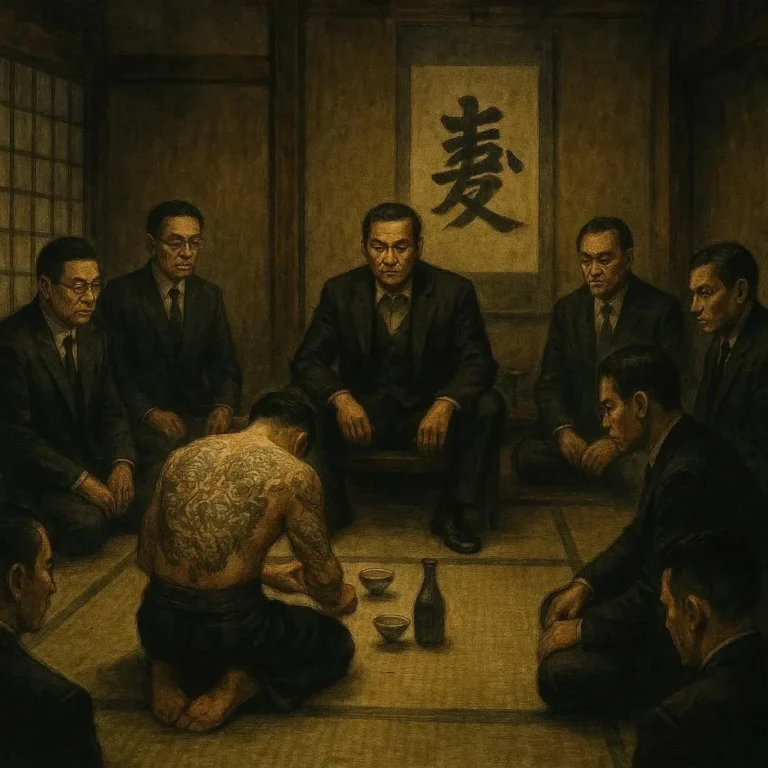506 views How Yakuza Navigate Legal and Social Boundaries
The Yakuza, Japan’s infamous organized crime syndicates, have long fascinated scholars, journalists, and the general public alike. While their exploits often capture headlines, the intricate ways in which they navigate the complex web of legal and social boundaries remain less understood. This blog post delves into the mechanisms and strategies employed by the Yakuza to maintain their influence while avoiding legal repercussions and societal censure.
The Yakuza: A Brief Introduction
Before exploring how the Yakuza navigate legal and social boundaries, it’s essential to provide a brief overview of their history and structure. Originating in the 17th century, the Yakuza evolved from various groups, including outcast classes and gamblers. Despite their criminal activities, they often portray themselves as protectors of certain communities and adhere to a code of conduct known as giri-ninjo (duty and humanity).
Historical Roots: How the Yakuza Survived Centuries
The Yakuza’s ability to navigate legal and social boundaries is deeply rooted in their historical development. During the Edo period, they emerged as a response to social and economic disparities. By positioning themselves as Robin Hood figures, they gained a degree of acceptance from marginalized communities. This historical narrative continues to shape their public image and inform their strategies for maintaining influence.
The Yakuza’s Organizational Structure
The Yakuza’s hierarchical structure, resembling that of a feudal clan, plays a significant role in their ability to navigate legal and social boundaries. At the top of the hierarchy is the oyabun (father figure), followed by underbosses and mid-level managers, and finally the street-level members. This structure allows for a clear chain of command and facilitates the enforcement of internal rules, reducing the likelihood of members acting independently in ways that could attract unwanted legal attention.
** Codes of Conduct: How the Yakuza Maintain Order**
One of the most intriguing aspects of Yakuza culture is their adherence to a strict code of conduct. This code, which includes principles such as loyalty, honor, and the resolution of conflicts without involving law enforcement, serves multiple purposes. By regulating internal behavior, it minimizes the risk of legal complications. Additionally, the code helps to maintain a sense of cohesion and purpose within the organization, which is crucial for its survival.
Operating in the Legal Gray Areas
One of the Yakuza’s most effective strategies for navigating legal boundaries is their ability to operate in legal gray areas. This involves engaging in activities that are not explicitly illegal but exist in a moral or legal ambiguity. For example, they may run legitimate businesses as fronts for illegal activities or exploit loopholes in the law to engage in quasi-legal enterprises. This approach allows them to maintain a veneer of legitimacy while still pursuing their criminal interests.
The Role of Legitimate Businesses
In recent years, the Yakuza has increasingly turned to legitimate businesses as a means of navigating legal and social boundaries. These businesses, which can range from construction and real estate to entertainment and hospitality, provide a legitimate source of income and help to obscure the organization’s illegal activities. Moreover, involvement in legitimate businesses allows individual members to present themselves as respected members of society, further reducing the risk of legal and social censure.
Conflict Resolution: Managing Disputes Internally
Another key aspect of the Yakuza’s ability to navigate legal boundaries is their emphasis on internal conflict resolution. Rather than resorting to violence or taking legal action, the Yakuza often resolves disputes through mediation and negotiation. This approach not only avoids attracting the attention of law enforcement but also helps to maintain internal stability. In cases where violence is deemed necessary, it is typically carried out in a way that minimizes the risk of legal repercussions.
Maintaining Social Acceptance
Despite their criminal activities, the Yakuza often enjoy a degree of social acceptance in certain communities. This acceptance is cultivated through a combination of fear, respect, and carefully managed public relations. For example, the Yakuza may present themselves as protectors of their communities, offering assistance to those in need or mediating disputes. By portraying themselves as a necessary evil, they are able to maintain a degree of social legitimacy.
The Role of Public Relations
The Yakuza’s ability to navigate social boundaries is also facilitated by their careful management of public relations. This involves cultivating a public image that is both intimidating and benevolent. For instance, the Yakuza may engage in public acts of charity or community service to improve their image. Similarly, they may use the media to present themselves in a favorable light, further enhancing their social standing.
Cultural Depictions and Public Perception
The portrayal of the Yakuza in popular culture has also played a role in shaping their public image and enabling them to navigate social boundaries. In films, books, and other forms of media, the Yakuza are often depicted as honorable outlaws, bound by a strict code of conduct. These depictions can influence public perception, leading to a degree of sympathy or at least ambivalence towards the Yakuza. While this does not necessarily legitimize their activities, it does contribute to their ability to operate with relative impunity.
** Alignment with Political and Business Interests**
Another strategy employed by the Yakuza to navigate legal and social boundaries is their alignment with political and business interests. By establishing relationships with influential individuals and organizations, the Yakuza can gain protection and legitimacy. For example, they may provide services such as security or debt collection to businesses, or offer political support in exchange for favorable treatment. These alliances not only enhance their social standing but also provide a degree of legal protection.
The Challenges of Modernization
Despite their adaptability, the Yakuza face significant challenges in navigating legal and social boundaries in the modern era. Increased globalization and the pressures of modernization have led to changes in both the legal landscape and societal attitudes. Law enforcement agencies have become more aggressive in targeting the Yakuza, and public tolerance for their activities has begun to wane. In response, the Yakuza have had to adapt their strategies, seeking new ways to maintain their influence while avoiding legal and social censure.
Conclusion
The Yakuza’s ability to navigate legal and social boundaries is a testament to their resilience and adaptability. By leveraging their historical roots, organizational structure, codes of conduct, and carefully managed public relations, they have been able to maintain their influence despite the challenges posed by modernization. However, as society continues to evolve, it remains to be seen whether the Yakuza will be able to maintain their position in the shadows of Japanese society.
In the end, the story of the Yakuza serves as a fascinating case study in the interplay between crime, law, and society. Their ability to navigate legal and social boundaries offers valuable insights into the complexities of organized crime and the ways in which criminal organizations adapt to changing circumstances. As we continue to study the Yakuza, we may uncover even more intriguing strategies and mechanisms that allow them to thrive in a world that often seems determined to marginalize them.





